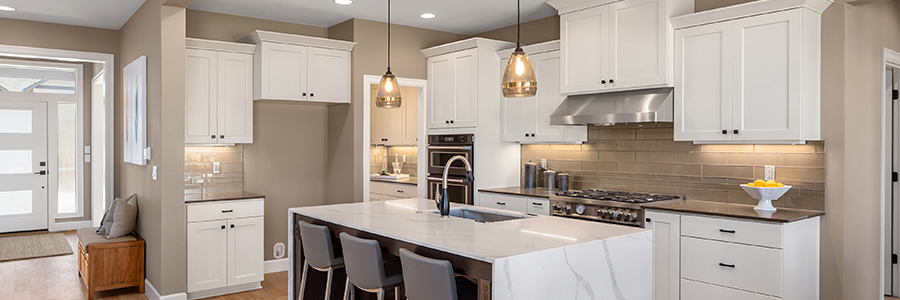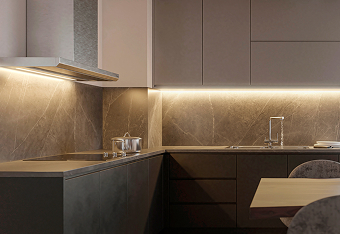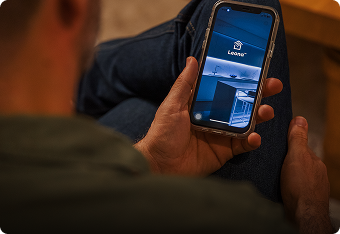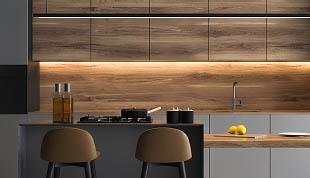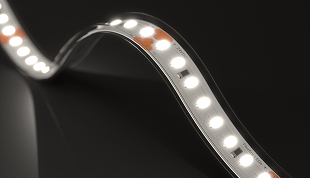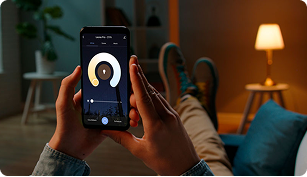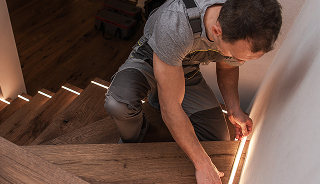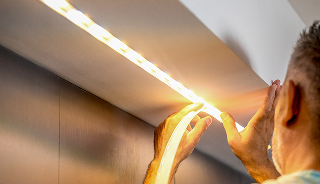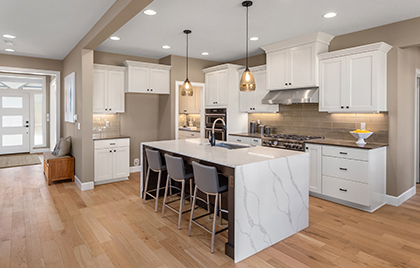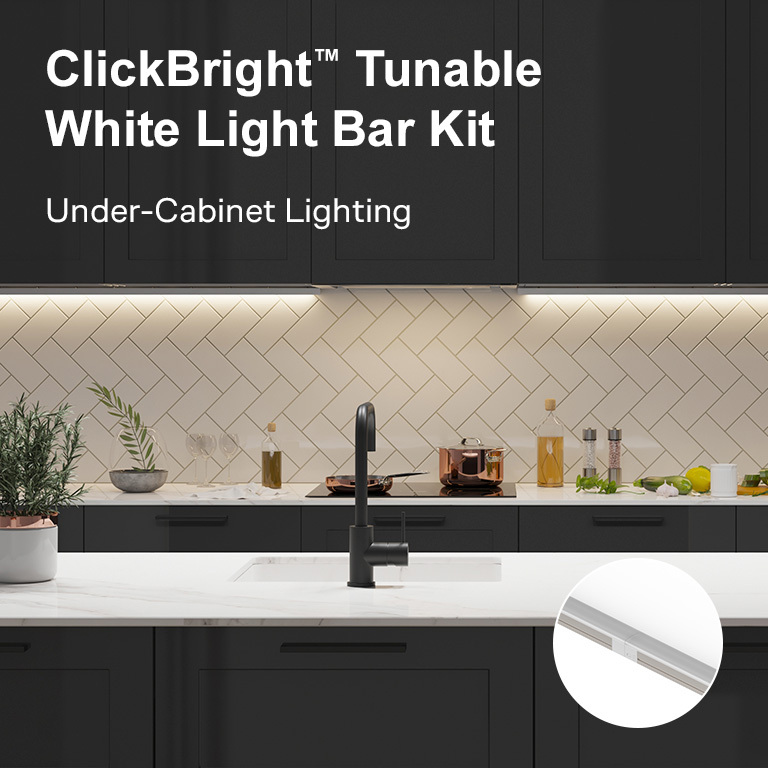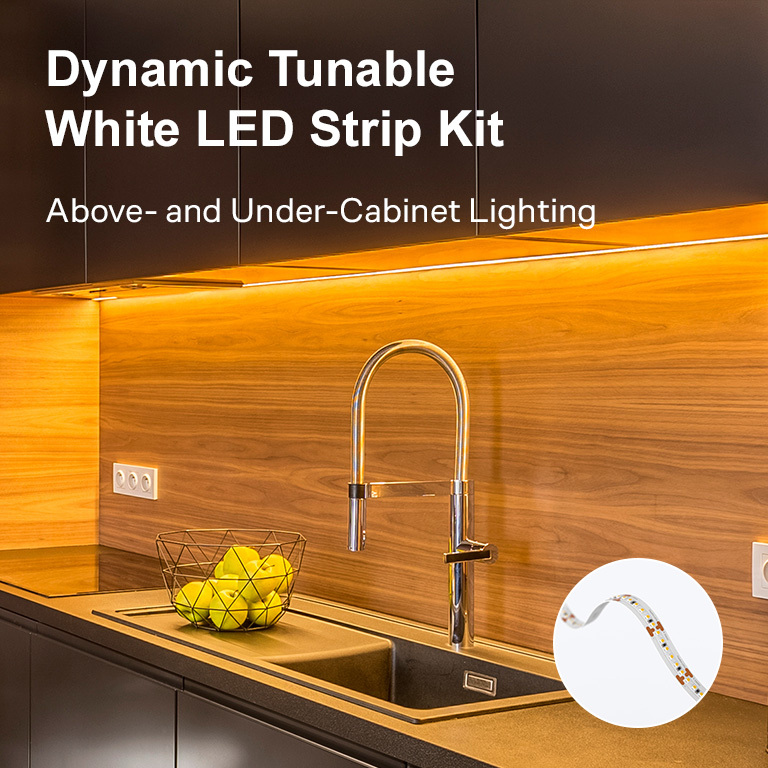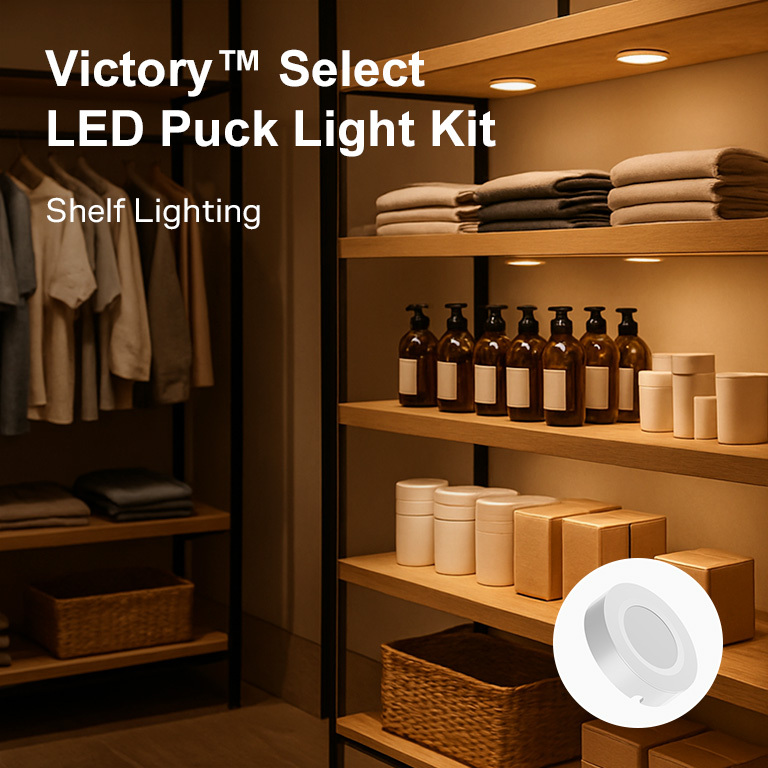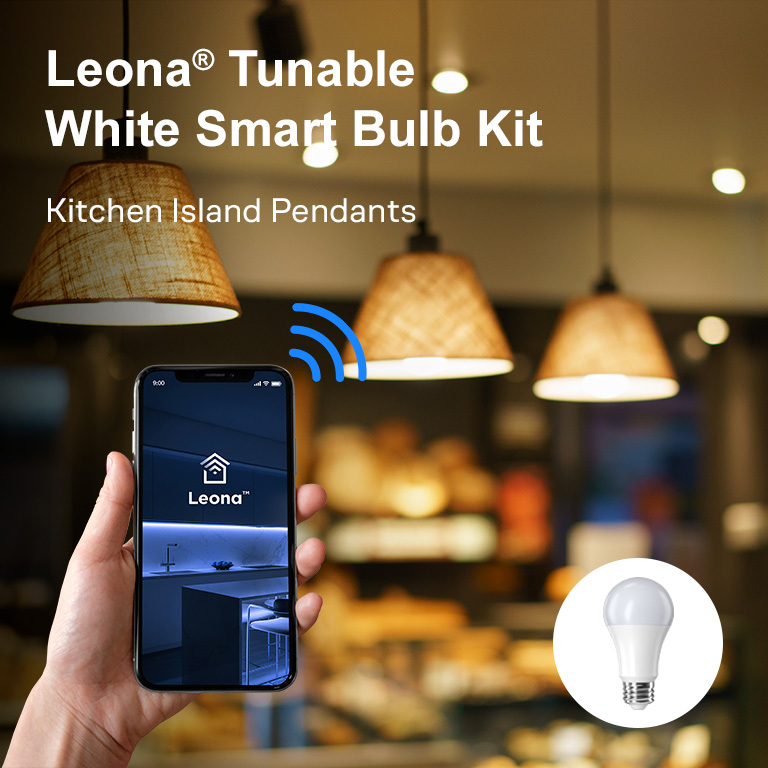Are LED Lights Bright Enough for My Kitchen?
Finding the best kitchen lighting always raises questions: How to brighten a dark kitchen? Do I need IP65 strip lights? Get the answers here!
Chopping fruit carefully, wiping off tiny stains on your dishes and counters, telling ingredients apart, adding style to the house—all those little kitchen tasks need plenty of light to do them right. So it’s fair to ask: Can LED lighting really handle it all in the kitchen? After all, good light means fewer cuts, cleaner and nicer spaces, and fresher food.
Today's LED options are so advanced that they can even light up warehouses and large buildings. So there’s no need to worry: LEDs can absolutely keep your kitchen bright and functional. But how do you actually measure how bright your kitchen LEDs are?
Understanding LED Light Brightness: Watts vs. Lumens

We’ve all been told by lighting salespeople or home goods stores that more watts means more light: The higher the wattage, the brighter the bulbs around our home. Well, not anymore! With energy-efficient LEDs, wattage tells you how much power your light uses, not how much brightness you actually get.
What really matters now are lumens: the true measure of brightness. If your lumen count is higher, your lights will be brighter. So the real question is how many lumens your kitchen actually needs to meet your cooking, cleaning, and ambiance needs.
How Bright Should LED Lights Be in My Kitchen?
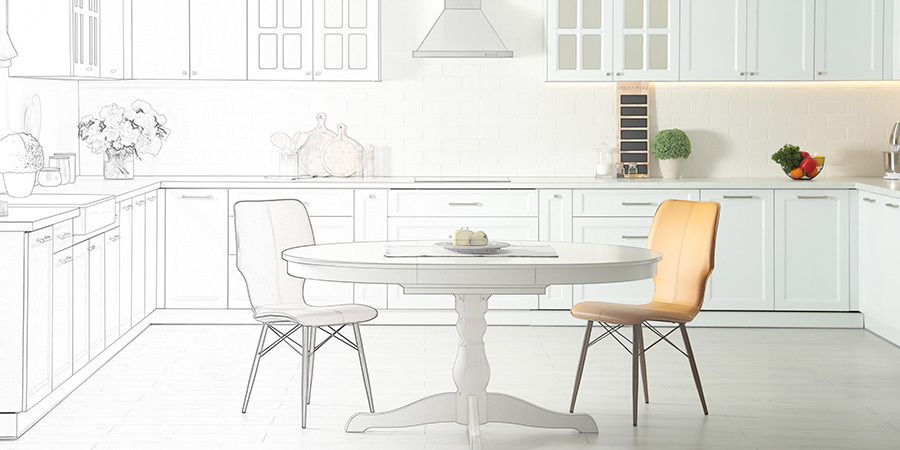
When planning your kitchen lighting, you’ll want to calculate the total lumens you need for the entire space. A good rule of thumb is to aim for a total of 30-40 lumens per square foot for general overall lighting, and 70-80 lumens per square foot for daily activities.
- Small kitchens (under 100 sq ft): A minimum of 3,000 to 4,000 lumens.
- Medium kitchens (100-200 sq ft): 4,000 to 8,000 lumens.
- Large kitchens (over 200 sq ft): 8,000+ lumens.
But this is just the starting point. The best kitchens use a layered approach to lighting.
The Three Layers of Kitchen Lighting
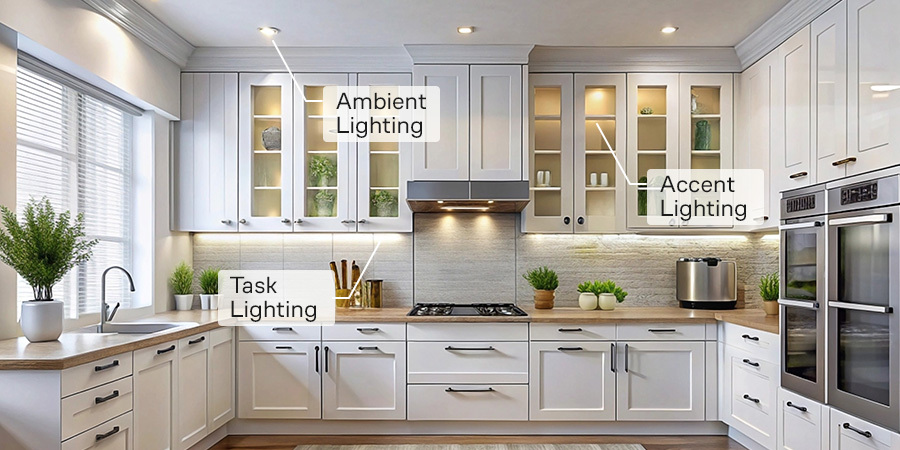
The days of lighting our kitchens with a single overhead bulb are long gone—not only does that leave dark corners, but it also keeps your kitchen from becoming the design statement it deserves to be. One of the key principles for a modern kitchen is layering with three lighting types: ambient, task, and accent LEDs.
1. General Room Illumination (Ambient Lighting)
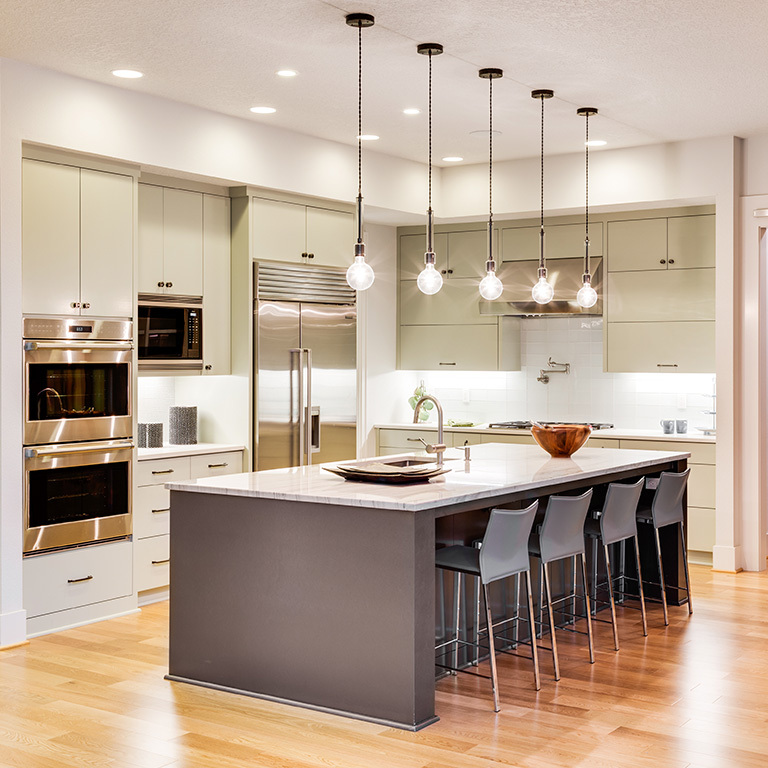
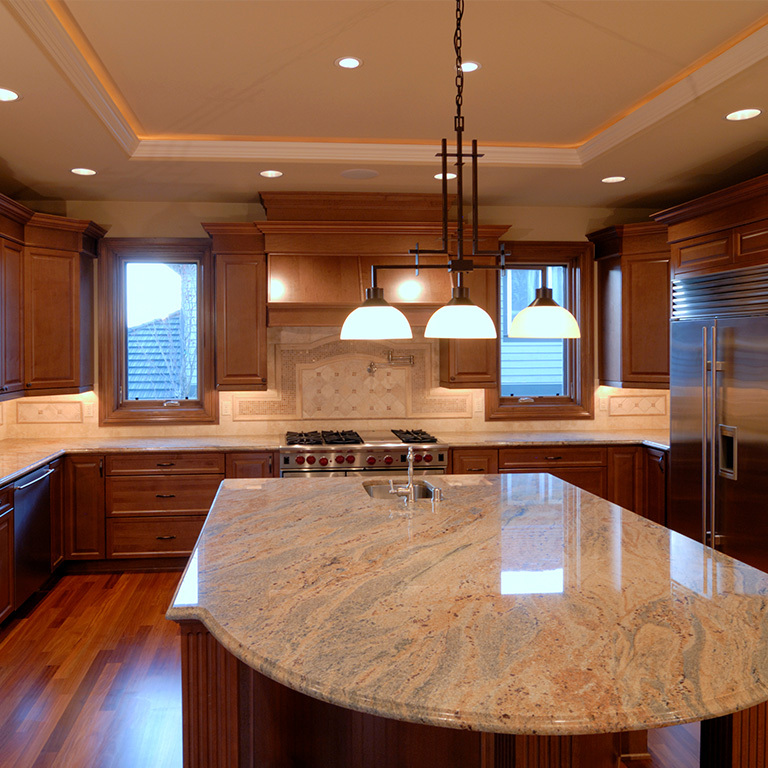
This is the main light source that fills the entire room. It should be bright enough to let you and your family see and move both during the day and in the evening, safely and without glare.
- Top Applications: Cove strip lighting, recessed ceiling panels, track lighting, or central kitchen island pendants.
- Lumens: 800-lumen light bulbs or longer runs of ~500-lumen-per-foot LED strips are often a great choice.
2. Task Lights (Cooking Surfaces)
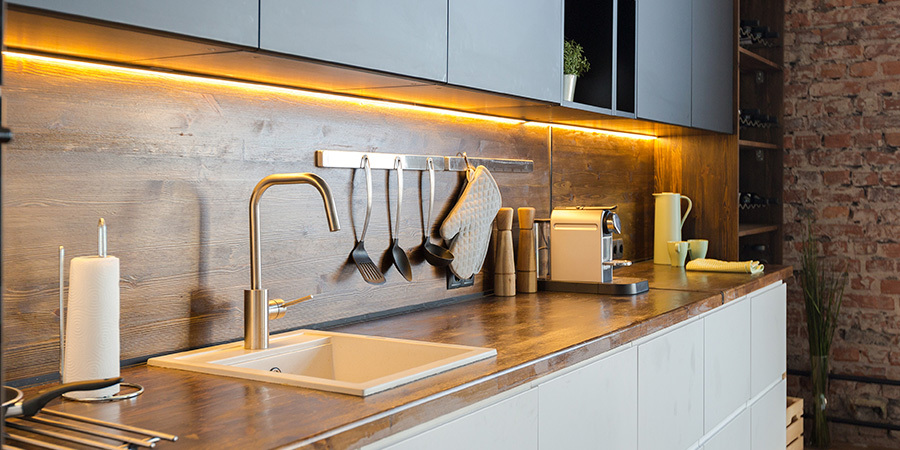
As the name suggests, this is the light that guides you through all those everyday kitchen tasks that require focus and clarity—washing dishes, measuring and mixing ingredients, plating, or decorating pastries. It’s the light that brightens up your countertop, sink, and stove areas.
Also keep in mind that your countertop, backsplash, and the underside of your cabinets tend to trap light, almost like a box. That’s why it’s important not to mistake the clarity you need to work comfortably for an overly harsh brightness.
- Top Applications: Under-cabinet LED lighting, or pendant lights over an island.
- Lumens: Look for LED strips with a lumen output of 300 and above lumens per foot or LED light bars.
3. Accent Lighting (Decoration & Style)
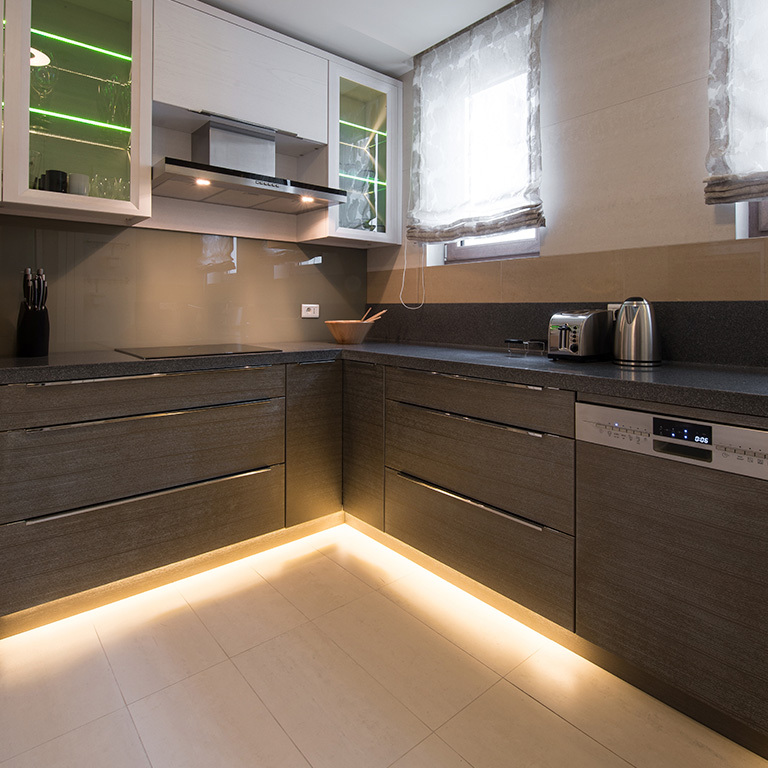
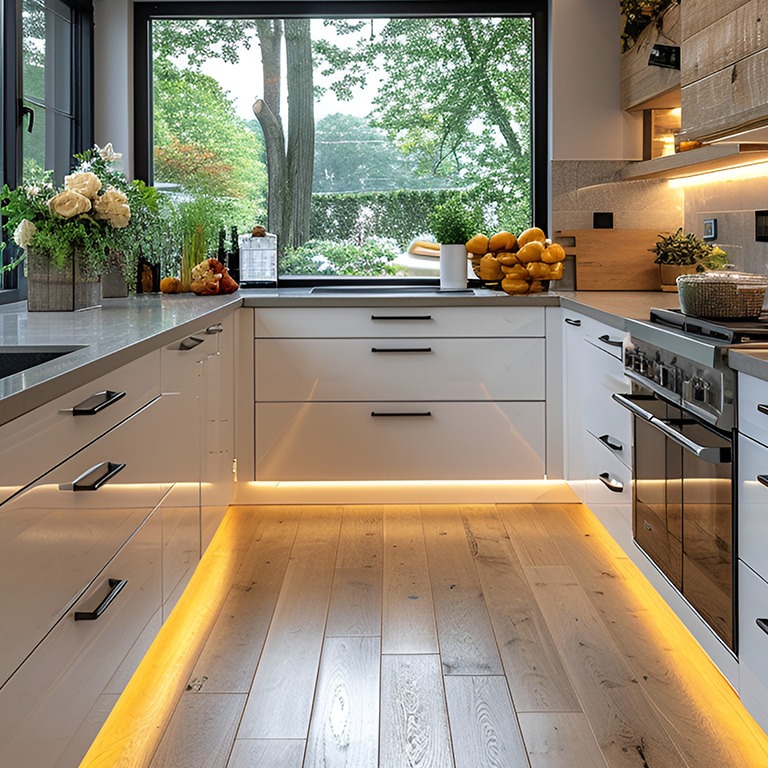
Accent lights are all about setting the mood for special occasions—whether hosting a cooking party for the kids or providing a beautiful backdrop for a formal dinner in the adjacent dining room—and highlighting beautiful kitchen features like floor tiles or wood finishes.
It adds depth, visual interest, and can transform the atmosphere from a functional workspace to a welcoming gathering spot for friends, family, and even your better half.
- Top Applications: Under-counter strip lights, above-cabinet strip lighting, toe-kick strip lights, or luxury illuminated stone countertops.
- Lumens: This layer requires the lowest brightness, typically in the range of ~130-lumen-per-foot for LED strips.
Other Important Considerations
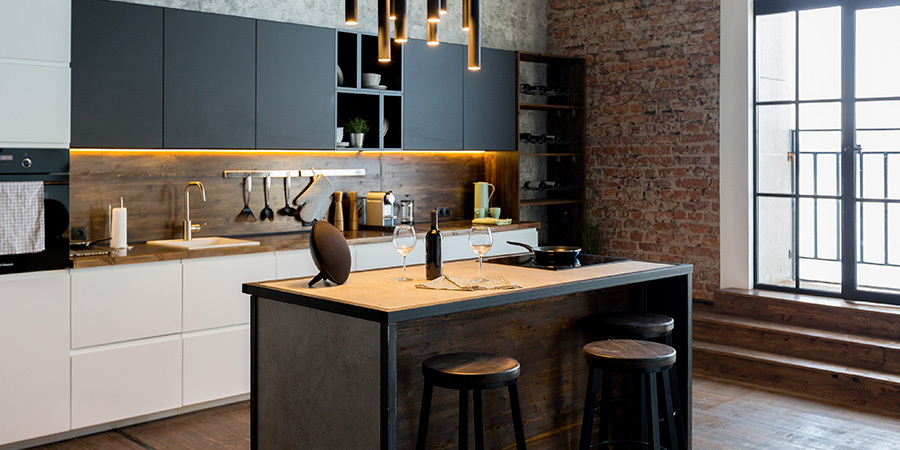
- Dimmers Are Your Ally: Install a dimmer or smart home system that lets you control each lighting layer individually—or all together. That way, you’re always in charge: Turn up the brightness for meal prep, then lower the lights for a warm, cozy dinner.
- Kitchen Size and Layout: A larger kitchen or one with a complex layout will naturally require more light sources to ensure every corner is well-lit.
- Surface Finishes: Darker cabinets, floors, and countertops will absorb more light, requiring a higher total lumen output to achieve the same brightness as a kitchen with light-colored surfaces.
What Color Temperature is Best for Kitchens?
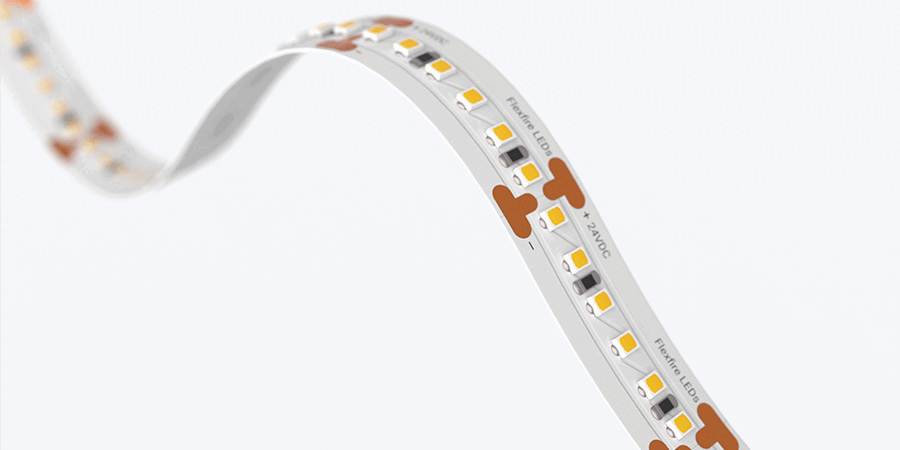
Once you’ve decided how bright you want your lights to be, here’s another key recommendation for your kitchen: Always go for white lights instead of color-changing ones.
The reason is part tradition—white light has long been associated with cleanliness and freshness in food—and part design. In kitchens, plain white light means simple elegance and the right, timeless choice, whether it’s the house you live in or one you will sell in the future.
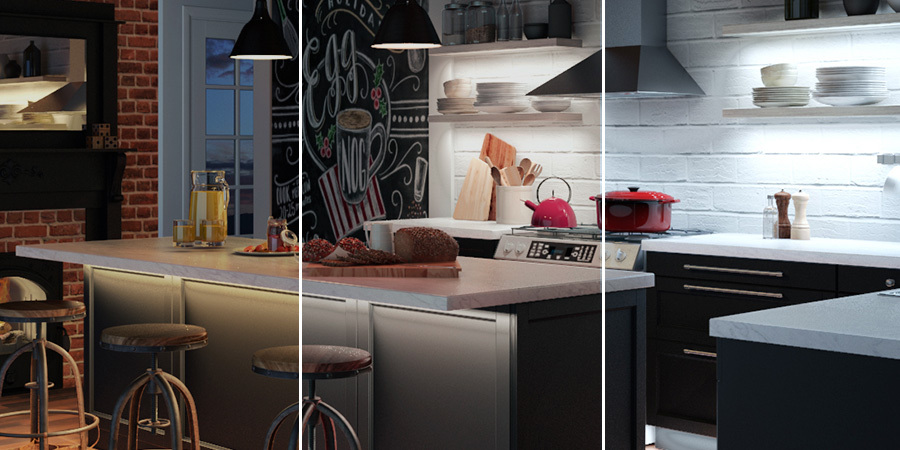
With white light, another factor influences which product you choose for each kitchen area. It’s called Correlated Color Temperature (CCT), or simply the shade of white your lights produce, and it’s measured in Kelvin.
For starters, think about what each light is meant to do: whether it’s helping you sort groceries in the pantry, highlighting nice-looking appliances or pottery, or emphasizing special details like a designer backsplash or wallpaper.
Also, matching color temperatures across your kitchen keeps the space visually cohesive and avoids awkward contrasts. This often happens in remodels where we keep beloved fixtures—for example, pairing cool white LED strips under cabinets with a warm incandescent chandelier above the island.
Once you know your goals, you can choose the right color temperature for each area. For kitchens, the three CCT ranges that matter most are:
Warm White (3000K)
A soft, yellowish glow reminiscent of classic, old-style bulbs. It’s great for showcasing food beautifully—its warmth makes colors look appetizing—and for creating a relaxed, inviting atmosphere during meals and socializing
It pairs beautifully with wood, yellow, or red tones, enhancing the earthiness of natural materials like stone countertops.
Neutral White (4000K)
A clean, balanced white that’s ideal for all kitchens. It offers excellent visibility for everyday tasks without feeling too harsh or hospital-like, making it the most versatile choice for general kitchen lighting.
Cool White (5000K)
A bluish-white light that’s excellent for keeping you awake when making breakfast early in the morning and for tasks that require extreme focus.
It also complements modern spaces with gray, blue, or black finishes. Its crisp, stimulating light feels clean and precise, even more so if your kitchen has stainless steel appliances or a minimalist design.
However, it can feel too cold for the kitchen’s overall mood, so it’s best used sparingly or in focused areas.
How to Hide LED Strip Lights in My Kitchen?
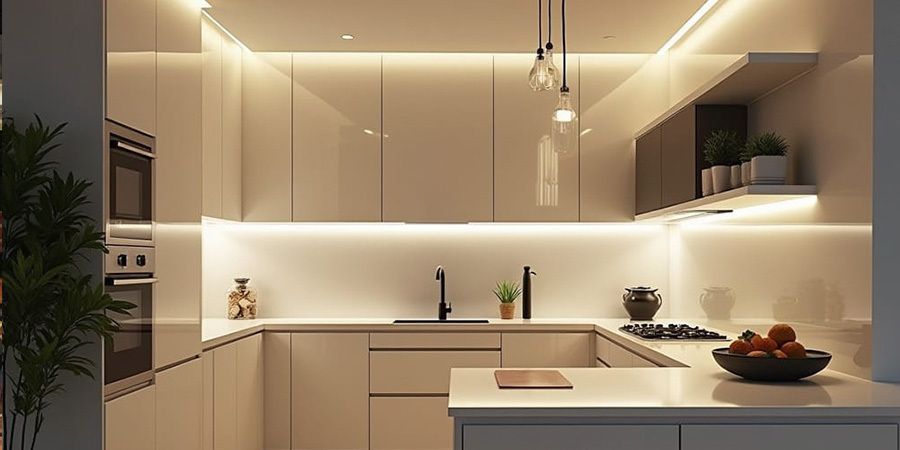
A well-designed kitchen makes the most of brightness, color temperature, and the other lighting traits we’ve covered above from hidden niches. That’s right: achieving a sleek look means making the lighting feel fully integrated and seamless, with both the light sources and power supplies practically “invisible” to the eye.
With all the kitchen’s cabinets and built-in storage, there are plenty of discreet spots where you can safely connect a power supply to your home’s electrical system and start your install’s circuit. Some good examples include above or inside cabinets, as well as in any well-ventilated area away from heat sources like microwaves.
For strip lights, concealment is especially important to avoid seeing the individual mini-LEDs (also called chips or diodes), which can create an unflattering dotted effect. It also helps prevent glare that can strain your eyes or make detailed cooking tasks harder.
The most effective way to hide LED strips and achieve a polished, continuous line of light is by using aluminum channels—a U-shaped track that houses the strip. Each channel comes with a cover, known as a diffuser, which can soften the light so it appears seamless and even. Plus, it gives your installation a clean, professional finish.
Are Recessed LED Lights Good for My Kitchen?
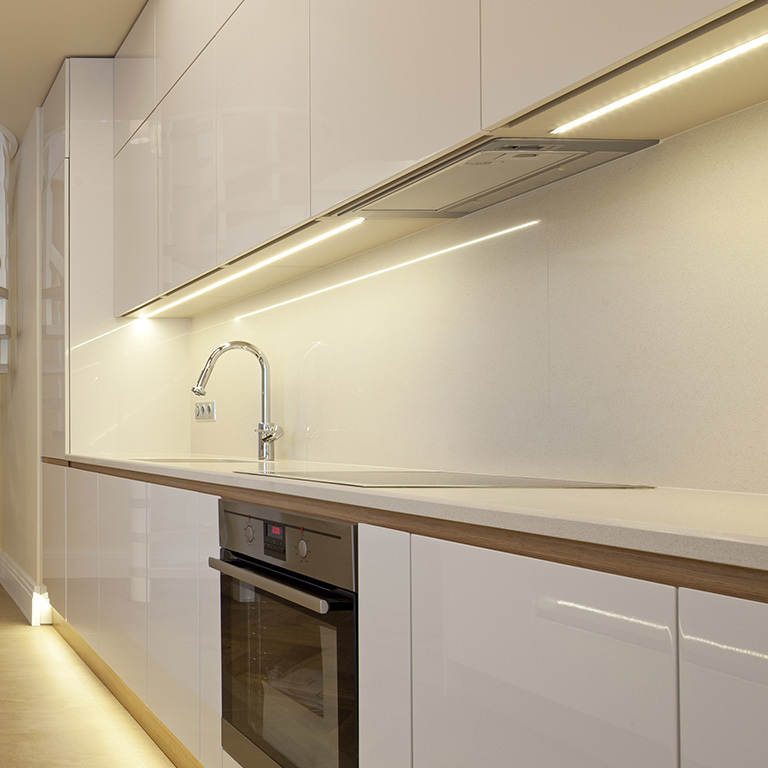
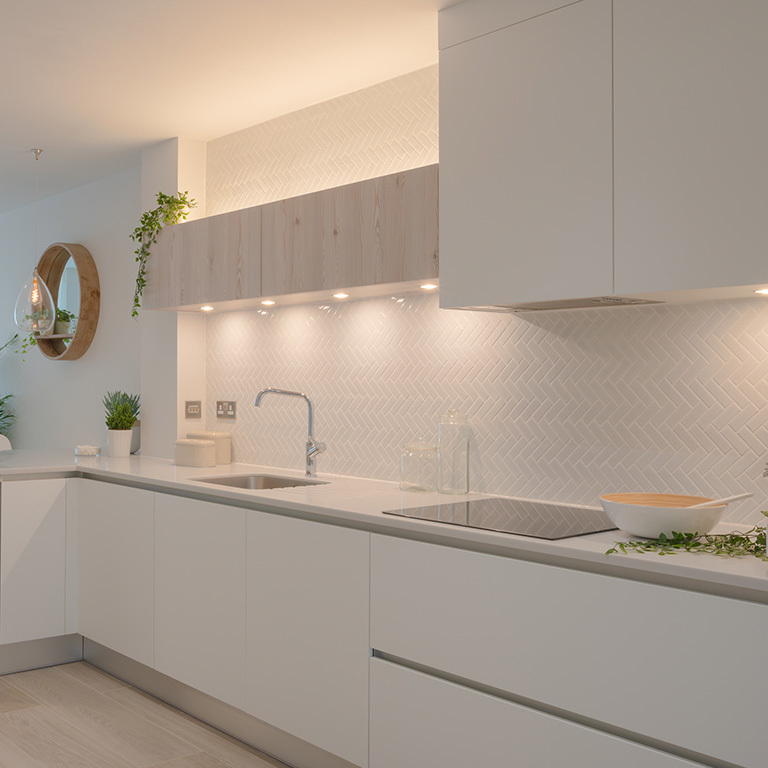
For a completely hidden look, recessed mounting channels are the way to go. Embedding the channel directly into wood- or particleboard-cabinetry undersides keeps the light source out of sight, which is especially useful in work areas like countertops or prep zones where the strip might otherwise be visible when working.
Other areas of your kitchen, like decorative floating shelves with ceramics or plants, can also benefit from recessed lighting. For instance, puck lights built into floating shelves cast focused illumination right onto the objects you want to highlight, adding beauty and choosing where to direct your guests’ attention in your space.
Flexfire’s Recommended LEDs for Kitchens
After covering all the key questions about whether LED lighting is right for your kitchen, let’s wrap up this guide with the most important one of all: What’s the best type of LED light for my kitchen? Here are two expert tips to help you find the answer.
First, remember that any areas close to your sink, stove, or dishwasher—or really anywhere moisture or steam might form—require lights with special protection known as IP65. These are the same kind of LEDs you’d use outdoors on a patio or deck, designed to handle humidity safely.
Second, to make sure your kitchen is always ready for any occasion, we recommend tunable white technology. It lets you adjust the color temperature of your white lights at the touch of a button: warm white for cozy family dinners, cool white for more formal gatherings, and neutral white for everyday use.
With that in mind, here are Flexfire’s top LED products to completely transform how you see your kitchen day in and day out:
What matters most is that your kitchen fits your needs, taste, and lifestyle. Try our DIY Project Builder: the only online tool that recommends exactly what you need for your kitchen project, along with all the right accessories, in just minutes.
